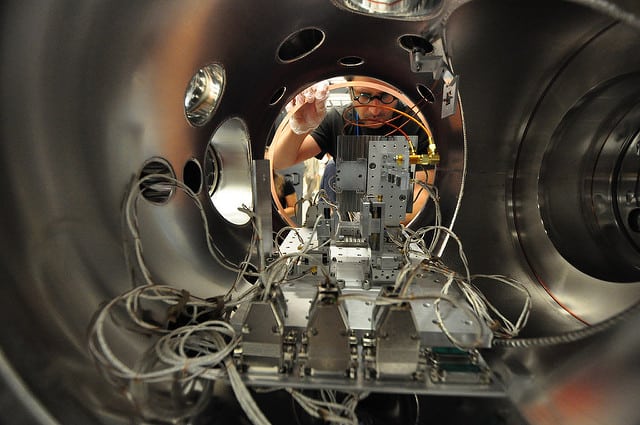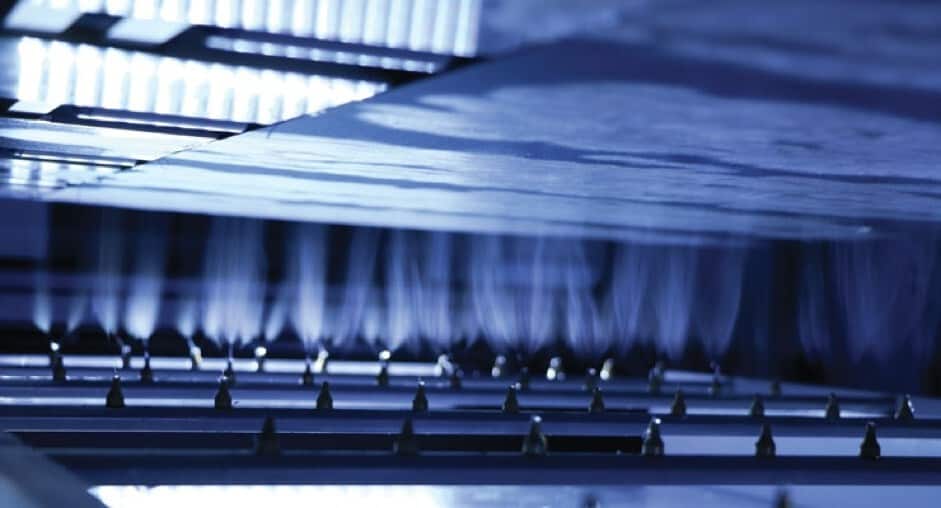Technology is moving at a speed never seen before in human history. Day after day technology is being advanced further and further and innovative new processes and materials are pushing the application of science to the limit.
Nowhere is this more apparent than in the field of nanotechnology and nanofibers. Today more than ever the development and research into these materials are the subject of a large number of studies. In manufacturing their application are only limited to the ingenuity of the development department and access to the right industrial electrospinning machine.
Electrospinning is the process by which nanomaterials are made, through a simply but effective process, it produces fibres, polymers and other nanometric devices that are already being used in a wide range of structures and industries.
The adaptability of the output materials, and the adaptability of equipment to suit any purpose and scale is becoming the new direction of many a manufacturing process across a range of fields and sectors.
Nanofibers have a huge potential across a range of sectors
The range of sectors now using this new technology is quite amazing. You can already see it in regular use across:
Food packaging: it is intended to increase the shelf life of food, as well as preserve its properties.
Nutraceuticals: related to pharmacy and nutrition
Immobilization of living cells: used in the application of in vitro processes and used to harness cells
Functional foods: the so-called functional nano-foods, microcapsules, etc.
And innovations with this technology are being seen every day in
Biomedical and tissue engineering
Cosmetics
Delivery of medicines
Micro and nano encapsulation
Catalysis
Energy storage
Functional textiles
Phase change material
Filtration and separation
Affinity membranes
Compounds and nanocomposites
Each area is quite different, and uses different materials and have different requirements for the final product. This means being able to adapt the principles of the technology in a bespoke way.
Adaptability and multiple uses for nanofibers and nano materials

Currently industry production methods and academic research are the main two areas with the highest demand for electrospinning equipment. Particularly in companies where there is a strong research and development laboratory, or strong links to university research.
With such a wide range of applications, the requirements for the machinery to produce the materials can be quite wide ranging depending on the individual requirements of the manufacturer or lab.
The equipment could be required for a small research lab, or large production plants. Luckily the process lends itself easily to both, and there are many instances these days of companies producing nanomaterials at scale via electrospinning.
To give one very specific example from the field of biology and medicine, nanofibers are used now in the production of fake skin and barriers for organs. The properties required to allow the artificial material to successfully mold and allow growth of living tissue are such that three-dimensional structures that allow cell growth must be developed. To achieve this, the fiber must be of an adequate size, with the correct distribution of the pores.
This allows for the migration of cells, the formation of blood vessels and the diffusion or exchange of materials between cells.
In addition, these structures must provide the same functional characteristics as the replaced tissue, and be compatible with the organism to avoid rejection by the immune system.
It is vital that, in order to achieve outstanding results, the chosen manufacturer of machinery is of the highest quality. It is very important. Particularly when trusting the machinery to produce highly technical fibers like this.
The correct type of equipment is key for developing nanomaterials
The cost of setting up an electrospinning lab or factory is far less than many other types of manufacturing process, meaning it is far more achievable for businesses to show that the investment is worth it.
Building a machine to the right specification for the materials involved is important. It is important to make sure that the design is suitable for using different materials and formulations; that is compact and light in such a way that allows for maximizing of space.
It needs to be constructed with with easily cleanable materials and have a simple interface for operators that allows for easy use and quick upskilling of researchers or employees.

